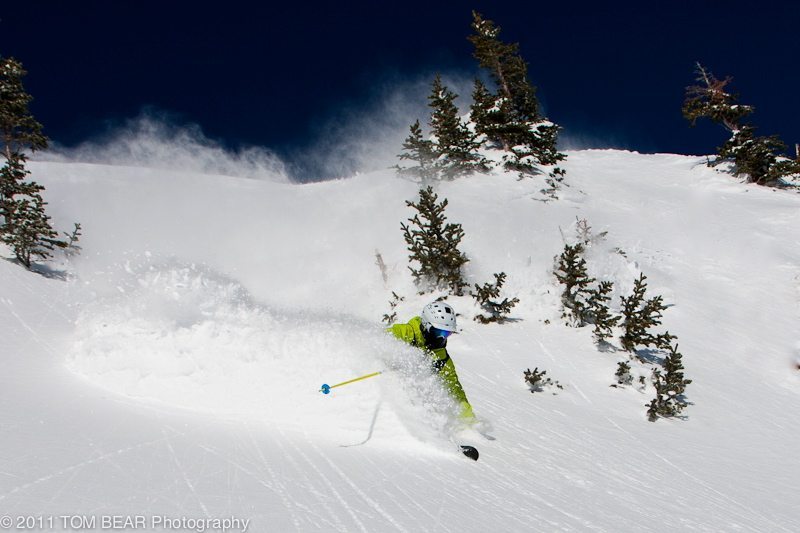Powder Skis
Pow skis: the kind everyone’s stoked on, and for good reason. Powder boards are designed with wide dimensions all around (~110 – 135mm underfoot) for days when it’s fresh. You’d be hard pressed to find a powder ski that lacks a healthy amount of reverse camber (again, see that Rocker 101 article), which promotes effortless flotation through the soft stuff (no more feeling like you have to lean back in your boots to keep your skis’ tips from diving—these aren’t your typical rental skis).

Various pow skis have more or less tail rocker and soft to stiff flex profiles to suit different riding styles. (For example, I prefer a flatter tail in a powder ski than some folks.) Once you become comfortable riding in powder, you’ll start to get a feel for what pow-performance characteristics you prefer over others.

Making a wide, torsionally rigid ski is no longer a difficult task for manufacturers. The challenge now is to make a powder ski that floats well in a foot or two of new snow, but is also enjoyable to ski on hardpack. With this progression in powder ski design, wide “5 dimension” skis are becoming more and more popular, due to their versatility.
A traditionally shaped ski will have a smooth radius sidecut from the ski’s waist up through its shovel. 5-dimension skis taper significantly from a wide point before the tip and tail (allowing a wide ski to be relatively stable, nimble, and predictable on hardpack), and they incorporate plenty of rocker and surface area to keep you afloat when conditions get deep. (See BLISTER’s review of the Armada AK JJ, one of the most popular 5-dimension skis on the market.)
A powder ski probably isn’t going to be your first ski purchase, but it’s likely to follow once you’ve gotten a few killer pow days under your belt.
Park Skis
Made to spin and flip off terrain park jumps, rails, and boxes, park skis are often light, relatively narrow underfoot (~78-85mm), and have near fully symmetrical dimensions. To make spinning and skiing switch as easy as possible, riders often mount their bindings at the center of the ski (as opposed to a more traditional mount of ~7.5cm back of core center).
Park skis can be a blast on groomers, but many are made with very soft flex patterns that don’t perform as well through chop or crud. High-end park skis typically used by serious park riders and pros are usually pretty stiff with traditional camber throughout the ski. This gives the ski a healthy amount of pop and stability when carving off of the lip of a jump at high speeds.
Most beginners would probably do just fine on a park ski, but unless you know park riding is really your thing, for a first ski you might consider something a little more versatile in the all-mountain range.


Great article thank you. Now to find a rental shop in Christchurch, NZ, to try some set ups!